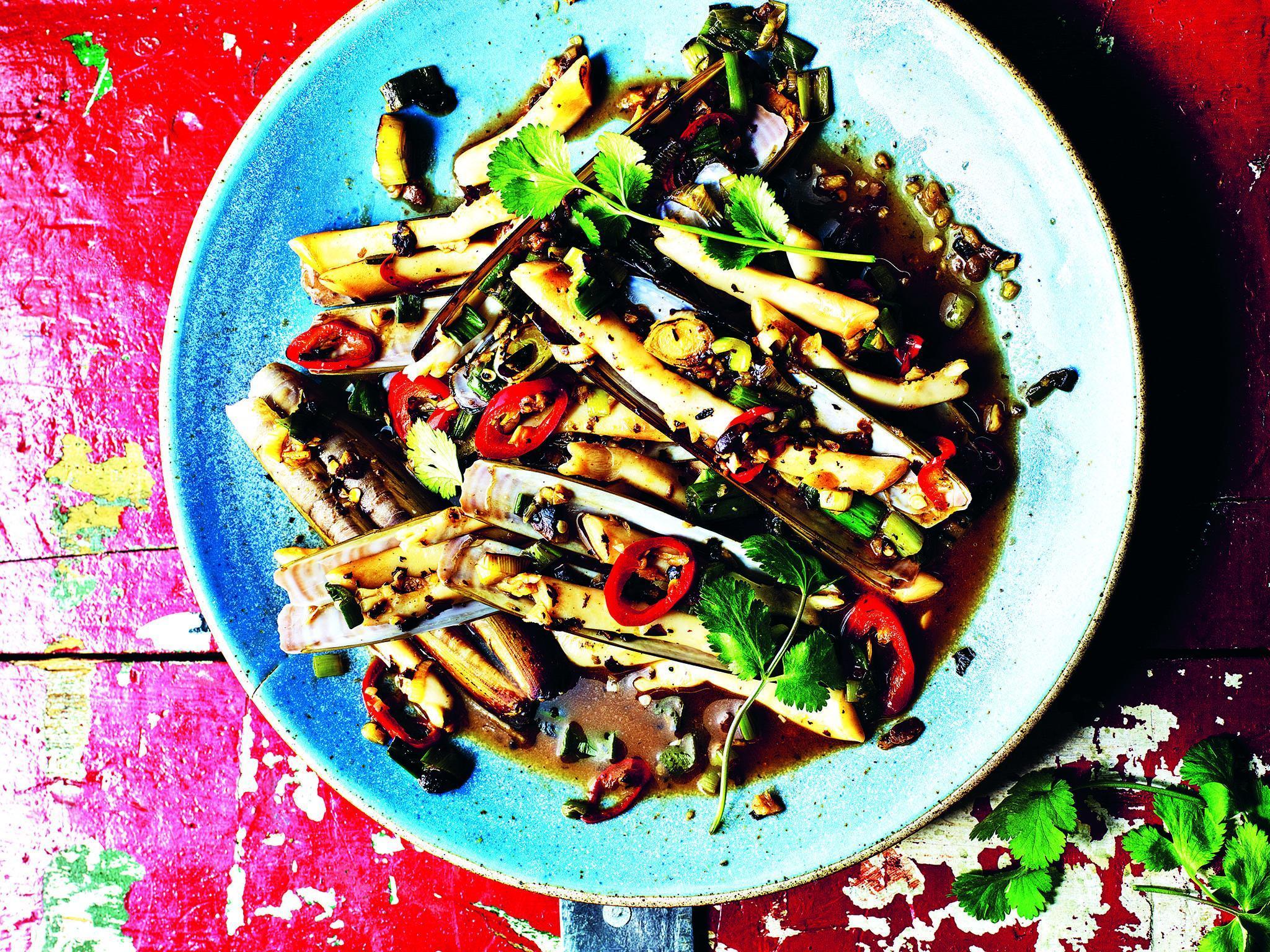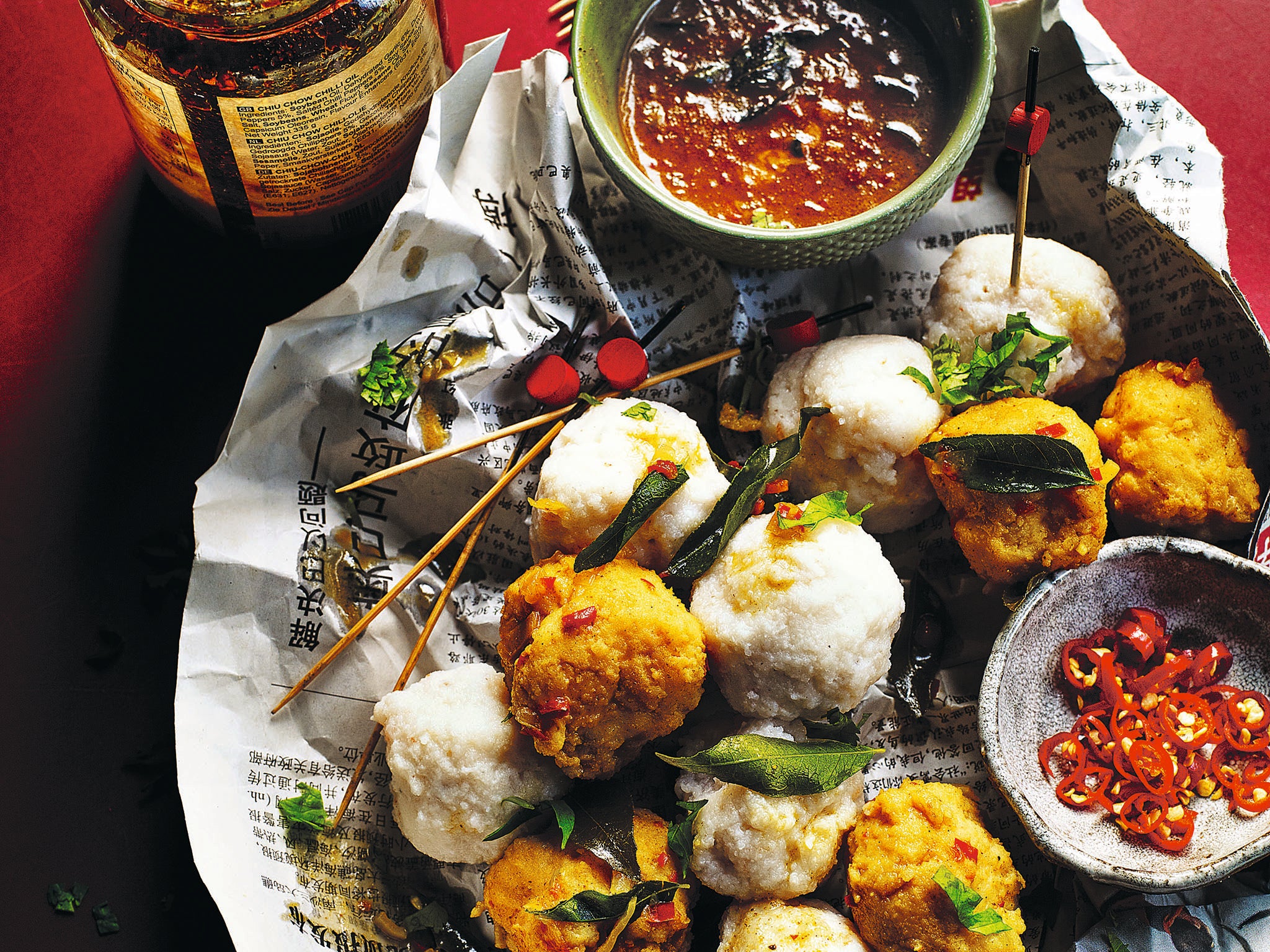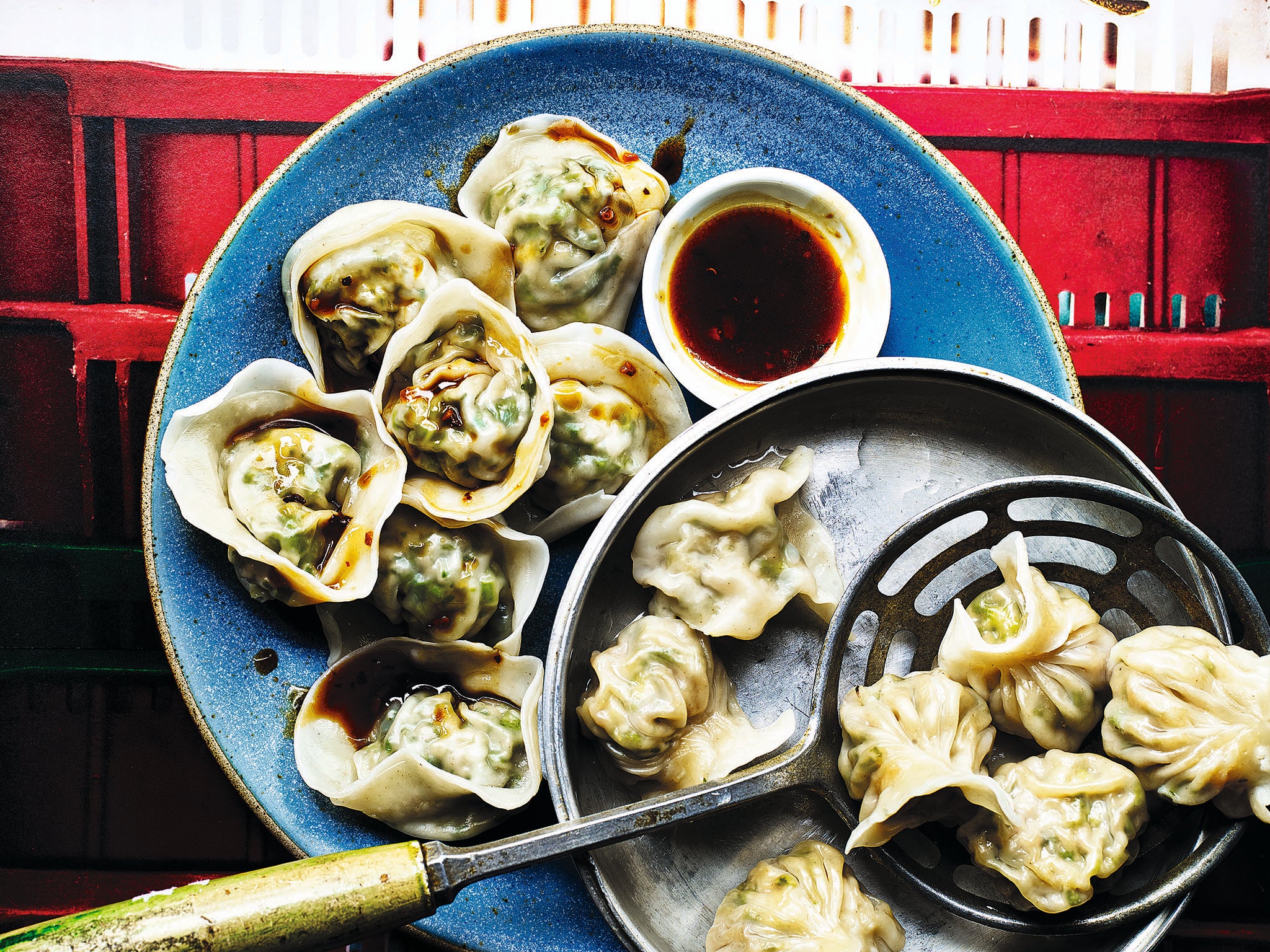Hong Kong Diner recipes: From kale dumplings to curried fish balls
Recipes for classic dishes that Hong Kong cuisine is known for

Your support helps us to tell the story
From reproductive rights to climate change to Big Tech, The Independent is on the ground when the story is developing. Whether it's investigating the financials of Elon Musk's pro-Trump PAC or producing our latest documentary, 'The A Word', which shines a light on the American women fighting for reproductive rights, we know how important it is to parse out the facts from the messaging.
At such a critical moment in US history, we need reporters on the ground. Your donation allows us to keep sending journalists to speak to both sides of the story.
The Independent is trusted by Americans across the entire political spectrum. And unlike many other quality news outlets, we choose not to lock Americans out of our reporting and analysis with paywalls. We believe quality journalism should be available to everyone, paid for by those who can afford it.
Your support makes all the difference.Razor clams with black bean chilli
Serves 3-4
2 cloves of garlic
½ a thumb-size piece of ginger
2 teaspoons preserved fermented black beans
1 fresh red chilli
1 spring onion
12 fresh razor clams (swap: 500g fresh mussels)
vegetable oil, for frying
fresh coriander (cilantro) leaves, to garnish
The sauce
1 tablespoon light soy sauce
½ tablespoon oyster sauce
½ tablespoon hoisin sauce
1 tablespoon Shaoxing rice wine
100ml chicken stock
1 teaspoon sugar
Finely chop the garlic and ginger, then ideally put into a mortar, or alternatively a food processor. Wash the fermented black beans, and add to the mortar / food processor and crush together to form a paste. Finely chop the red chilli and spring onion (scallion), keeping them separate. Combine all the sauce ingredients in a small bowl or ramekin.
Soak the razor clams in salted cold water for 10 minutes, then blanch in boiling hot water for one minute. Once they have cooled so they can be handled, they need to be cleaned. Much like mussels, in razor clams there is a ‘beard’ of sorts that can be quite dirty. The clams should have opened up from the blanching process, and you will now see the white meat, with a slightly dark part attached to the meat. Pull apart and discard the dark, sandy part of the clam until you are left with just the white meaty parts of the clams, while continuing to clean each shell under the running cold tap.
Once the clams have been cleaned thoroughly, place them in a bowl of cold water once more. Now build your wok clock: place the razor clams at 12 o’clock, then arrange the spring onions, black bean paste, chilli and lastly the sauce bowl clockwise around the plate. Bring one tablespoon of vegetable oil in a wok to a high heat and swirl it round the wok with your ladle or spatula. Once smoking hot, add the spring onion and stir-fry for 30 seconds. Next add the black bean paste and fry for a further 10–20 seconds.
Add 1 teaspoon of vegetable oil to the wok and allow it to smoke. Add the chilli, stir-fry continuously for 10 seconds, then pour in the sauce. Bring to a vigorous boil, then add the clams, folding the sauce evenly through them, and cover with a lid. Steam with the lid on for one minute, then remove the lid and fold everything together once more for a final minute or two to make sure it’s all evenly coated and seasoned. Serve immediately, garnished with the coriander (cilantro) leaves and a few of the blanched razor clam shells.

Hong Kong classic curried fish balls
This is one of those famous street food dishes that Hong Kong is known for. Though it may seem like an odd combination for a street food dish to those who have not spent much time in Asia before, they are a staple and can be found absolutely everywhere across the city.
Serves 3–4
Makes 25–30 fish balls
400g skinless, boneless Spanish mackerel fillets (swap: monkfish cheeks)
100g raw, peeled and deveined prawns (shrimp)
1 teaspoon sea salt
¼ teaspoon ground white pepper
1 teaspoon sugar
1 teaspoon pure sesame oil
1 egg white
2 teaspoons cornflour (cornstarch)
1 teaspoon fish sauce
20ml (¾fl oz) water
The curry sauce
2 cloves of garlic
2 large fresh red chillies
10 fresh curry leaves
3 tablespoons vegetable oil
100g finely diced onion
500ml chicken stock
1 tablespoon fish sauce
1 tablespoon cornflour (cornstarch), mixed with 3 tablespoons water
The curry paste
1 tablespoon Madras curry powder
¼ teaspoon chilli powder
1 tablespoon light soy sauce
¼ teaspoon salt
1 teaspoon sugar
3 tablespoons coconut milk
For best results, use an electric mixer with the k-mixer attachment. If you don’t have a mixer, you can use a food processor. Slice the fish into small pieces, and bash the prawns (shrimp) with a cleaver. Put both into the mixer. Start the mixer on a low speed and mix well for one–two minutes. Then add the rest of the fish ball mix ingredients and turn the speed up to medium.
Once all the ingredients are well mixed, turn up to high for two minutes, until a smooth paste has formed. To make the fish balls, bring a large saucepan, three-quarters filled with water, to the boil. Have a small bowl of cold water nearby. Dip your hands into the cold water, then make one ball at a time with the fish mixture and drop them straight into the boiling water as they are made. Once the fish balls float to the top of the water, they are ready either to cool, freeze and reheat another time, or to set aside for later in the recipe.
To make the curry sauce, finely chop the garlic, red chillies and onions and pick the fresh curry leaves. Mix together all of the curry paste ingredients until they form a smooth paste. Now build your wok clock: place the garlic at 12 o’clock, followed by the red chilli, curry leaves, curry paste and lastly the chicken stock.
You are now ready to make your curry sauce. Pour the vegetable oil into a medium saucepan and bring to a medium heat. Fry the onion for roughly five–six minutes, stirring occasionally, until well softened and starting to brown. Add the garlic, red chilli and curry leaves and continue to fry for another 2–3 minutes. After about 30 seconds, you should start to smell the distinct aroma of the curry leaves. Do not allow the leaves to burn, but once they are starting to brown a little, add the curry paste and stir well. It should start to boil within about 30 seconds or so.
Continue to stir the paste for two–three minutes, until it is just about sticking to the base of the pan. At this point, pour in a quarter of the chicken stock and bring to the boil once more. Once the sauce has reduced by half, pour the rest of the stock into the pan and bring to the boil. Then bring the heat down to a simmer and continue to cook for 30 minutes, or until reduced by half again, keeping the saucepan uncovered. Season the sauce to taste with fish sauce (this is used for saltiness and will complement the fish balls).
Once the sauce has been reduced, add one tablespoon of the cornflour paste and stir, while boiling, to thicken it slightly. Finally, either reheat the fish balls in boiling water for three–four minutes, or add them to the curry sauce for five–ten minutes to reheat and soak up the sauce. Serve with bamboo skewers on the side for a great treat or snack.

Pak choi and kale dumpling: The fat cat fold
Makes 25–30
25–30 ready-made round dumpling pastries, or thinly rolled circles of shui gao dough (see page 50)
The filling
2 medium or 1 large pak choi
5–6 large kale leaves
1 clove of garlic
½ a thumb-size piece of ginger
1 spring onion
5 sprigs of fresh coriander
100g minced pork (swapsies: extra firm, fresh tofu for vegetarians)
The marinade
½ teaspoon salt
½ teaspoon sugar
½ tablespoon pure sesame oil
Finely chop the pak choi, kale, garlic, ginger, spring onion (scallion) and coriander (cilantro) and place in a large mixing bowl, then add the minced pork and the marinade ingredients and mix well. To make the fat cat fold, place one dumpling pastry flat on a clean surface. Place roughly one teaspoon of the marinated mix in the centre of the pastry.
Dab a little water all around the edge of the pastry, then fold the top of the pastry over the filling until it meets the bottom edge and press down, closing the edges of the pastry to make a half-moon shape. Now, holding the side edges of the pastry, with the half-moon still pointing downwards, pull the two edges (cat ears) upwards to meet in the middle, creating a ‘fat cat’ shape.
Lastly, overlap the two top corners of the fat cat shaped pastry together and stick together with another dab of water, pinching together tightly. Do the same with the rest of the pastries and filling.

The same cooking method can be used for all of the dumpling shapes that follow. Fill a large pot or wok with water, add a pinch of salt and bring to the boil. Gently add your dumplings and boil for three–four minutes, or until they begin to float to the surface, signalling they are cooked.
Remove using a spider or slotted spoon and serve with the following dipping sauce.
Dipping sauce
½ teaspoon Chiu Chow chilli oil
1 tablespoon oyster sauce
½ tablespoon light soy sauce
100ml chicken stock
Combine the dipping sauce ingredients in a small pan, mixing well. Gently heat, reducing the sauce slightly, then pour into a dipping bowl and serve with fresh dumplings.
Hong Kong Diner by Jeremy Pang (Quadrille, £15) Photography © Kris Kirkham
Join our commenting forum
Join thought-provoking conversations, follow other Independent readers and see their replies
Comments